Garden centers and nurseries across the country commonly sell a number of known invasive species to unwitting customers. These plants are taken home and planted in the garden or yard, and before you know it, their unstoppable spread has taken over your property.
Invasive plants are the main cause of the decline in endangered and threatened species in the U.S. They grow quickly and spread easily, they compete for soil nutrients and eventually choke out native plants. On a more personal level, they’ll coat your entire property, killing your favorite trees and scaling the sides of your house before you even know what hit you.
7 invasive plants to avoid
1. Purple Loosestrife
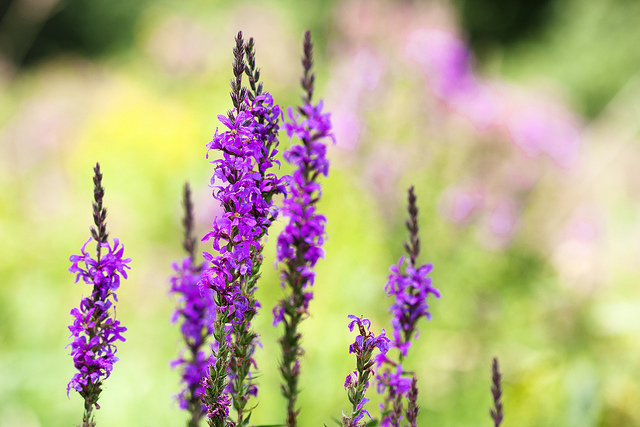
Photo via Creative Commons/Liz West
This perennial produces beautiful purple flowers all summer long and is available at most garden centers, even though it is quick to take over any area in which it is planted. If you’re trying to get rid of this feisty invasive, cut the plant down to the soil line instead of digging it up or pulling it out.
2. Japanese Barberry

Photo via Creative Commons/Natureserve
This woody shrub is quickly becoming a problem plant all across the U.S. This adaptable species can grow in sun or shade and virtually any soil type. Barberry is usually purchased at home and garden centers as a decorative shrub because of its vibrant fall foliage. The spread of this plant is causing threats to native understory plants.
3. Norway Maple
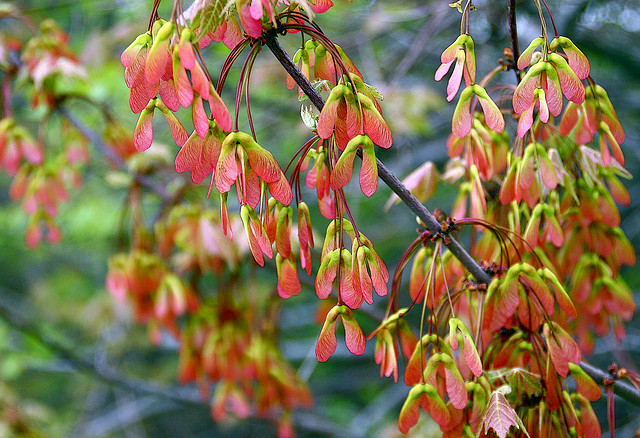
Photo via Creative Commons/Liz West
This less popular cousin of the beautiful sugar and red maples has been planted all over cities and towns as a decorative species. It can still be purchased in many plant nurseries even though it’s known to be very prolific and fast growing. One tree can produce hundreds of saplings in just a year. Plant this bad boy in your yard and you’ll be pulling up tiny trees for the rest of your life.
4. English Ivy

Photo via Creative Commons/Aaron Gustafson
This plant can be grown as ground cover or vines. It’s commonly sold in nurseries because it’s attractive and will grow in a wide variety of soil and sun. If it’s left alone, English Ivy will quickly take over your lawn, climb and choke your trees, and even cover your house. Save yourself the headache and leave this one at the garden center.
5. Wisteria
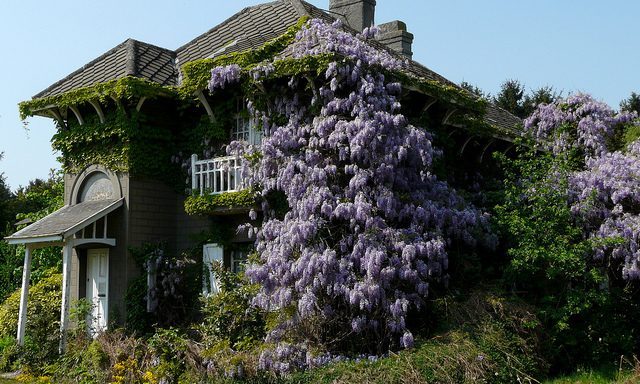
Photo via Creative Commons/Eddy Van
This gorgeous decorative plant blooms with beautiful purple flowers, making it a popular choice for landscaping. Its ability to grow quickly in almost any conditions qualify it for an invasive plant. Wisteria can be planted with success if it’s properly handled. If you do decide to add Wisteria to your property, take care to properly maintain it so it doesn’t take over.
6. Bamboo
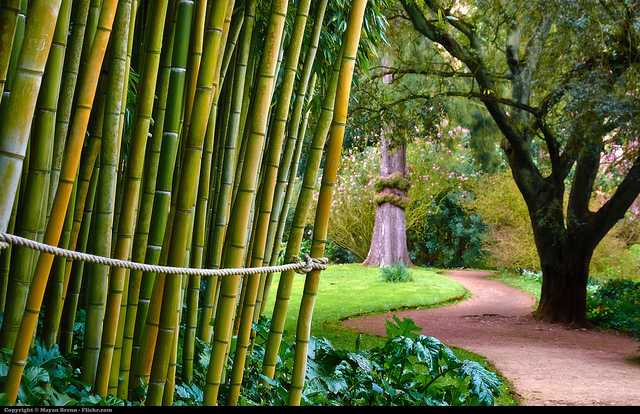
Photo via Creative Commons/Moyen Bren
Bamboo might seem like a great way to grow a quick hedge for privacy, but it’s also a great way to thoroughly upset your neighbors. Bamboo spreads with abandon and has no consideration for boundaries, climbing over sidewalks and under fences to take over properties in just one season.
7. Japanese Honeysuckle
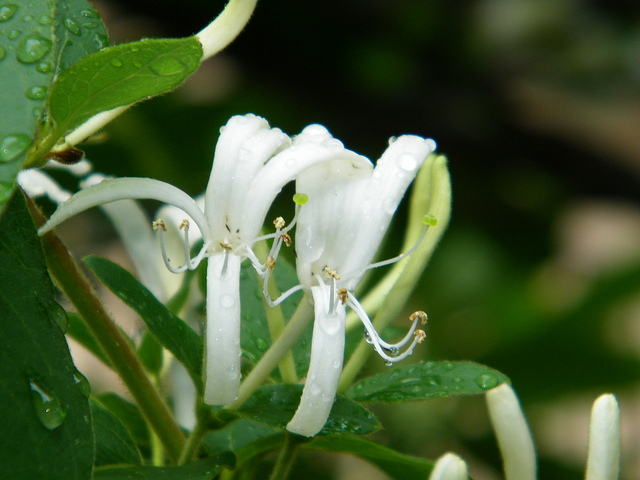
Photo via Creative Commons/Joel
Honeysuckle can be used as a ground cover or a climbing vine. It grows rapidly and is extremely difficult to control, classifying it as a noxious weed in many states. Don’t purchase this plant unless you want to fight it tooth and nail for eternity.
What to do about invasive plants on your property
Don’t buy them, don’t plant them
They may be pretty, but don’t plant these invasive plant species in your yard unless you want it to be quickly overtaken. Garden centers and nurseries continue to supply these plants because customers continue to buy them. Purchasing and planting invasive plants on your property will not only cause you a big headache in the future, they can spread to outlying areas and cause severe destruction of the landscape. Just say “no.”
How to remove invasive plants
If you happen to have these plants already growing on your property, there are two options: destroy them or maintain them. Some of these plants can grow several feet in just a few days, making them difficult to control. If you really enjoy their beauty, take the time to prune or cut back frequently so they don’t take over the property.
Most invasive plants can be destroyed by hand pulling and throwing away the plants. Don’t put them in the compost or the problem will perpetuate itself. Some invasive species need to be cut down instead of pulled, as disruption to the roots will actually cause more spread. Be sure to do your research on each invasive plant before removing them.
You might also enjoy our post on planting bluebells.
What makes online Craftsy classes great?

Learn for life! With lifetime access to your classes, you can watch lessons at your preferred pace and easily revisit your favorite concepts with just a click.

Kick up your feet! Enjoy classes anytime from the convenience of your home or even on-the-go with our mobile apps.

Get personalized guidance! Ask your fellow students questions to receive all the answers and feedback you need to succeed.

Love it! There’s no risk in trying when it’s free.

Share tips, start a discussion or ask one of our experts or other students a question.
No Responses to “Buyer Beware: 7 Invasive Plants Commonly Found at Garden Centers”